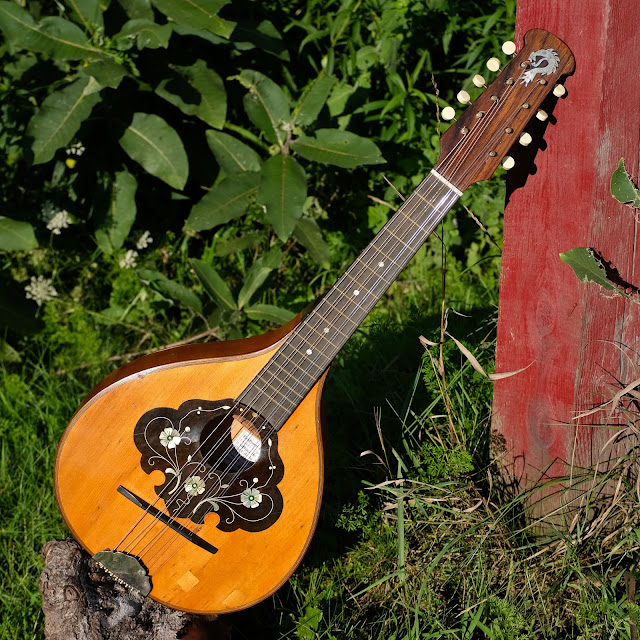1930s German-made Waldzither
The thing about waldzithers is that almost no one on this side of the Atlantic plays them in their natural tuning and that is a shame because that's the tuning they shine in. They're tuned CGCEG low to high with the low C the same as a mandola's and the high G a step below mandola or mandolin's A. The intervals are thus similar to a 5-string banjo if the drone string (the low C) was actually a note pitched at the "root." It's my understanding that this low C was used as a drone for the most part -- which makes sense as it's a single string rather than paired like the "playing" strings.
The lovely bit about this waldzither is that it's owned by a banjo player and so he does keep it in its natural tuning. As you can hear in the soundclip -- it's a beautiful tone! So, that makes me happy.
My vague history-lesson on the waldzither is that it's a folk-ified version of the Renaissance cittern/English guitar and evolved out of that mold into their modern form the same way that Portuguese guitars did. "Standard tuning" for cittern was (as I recall?) an open C chord almost like Dobro's open G intervals -- CEGCEG low to high. Can you see how that would've been easy to get to this tuning from? The (obnoxious) low E string is simply lopped-off. I never like a root to a third on the low side in open tunings, myself. A capo lets you get into other keys nice and easy, too.
My work on this one was just a fret level/dress, minor adjustment to the bridge, side dots, some seam repairs, a new bone nut (it had an ailing zero-fret setup), and a good setup. It plays with 1/16" action at the 12th fret -- spot on -- and has an essentially-straight neck. I strung it lighter than it was to help that neck out, too -- gauges are 40w, 26w/26w, 18w/18w, 13/13, 9/9.
Old repair work and the cool inlay at the headstock was done previously by a Mr. David Hynds in France.
I've made use of the close spacing at the tailpiece to allow ball-end stringing as I didn't have loop-end singles in the right gauges on-hand.












Comments